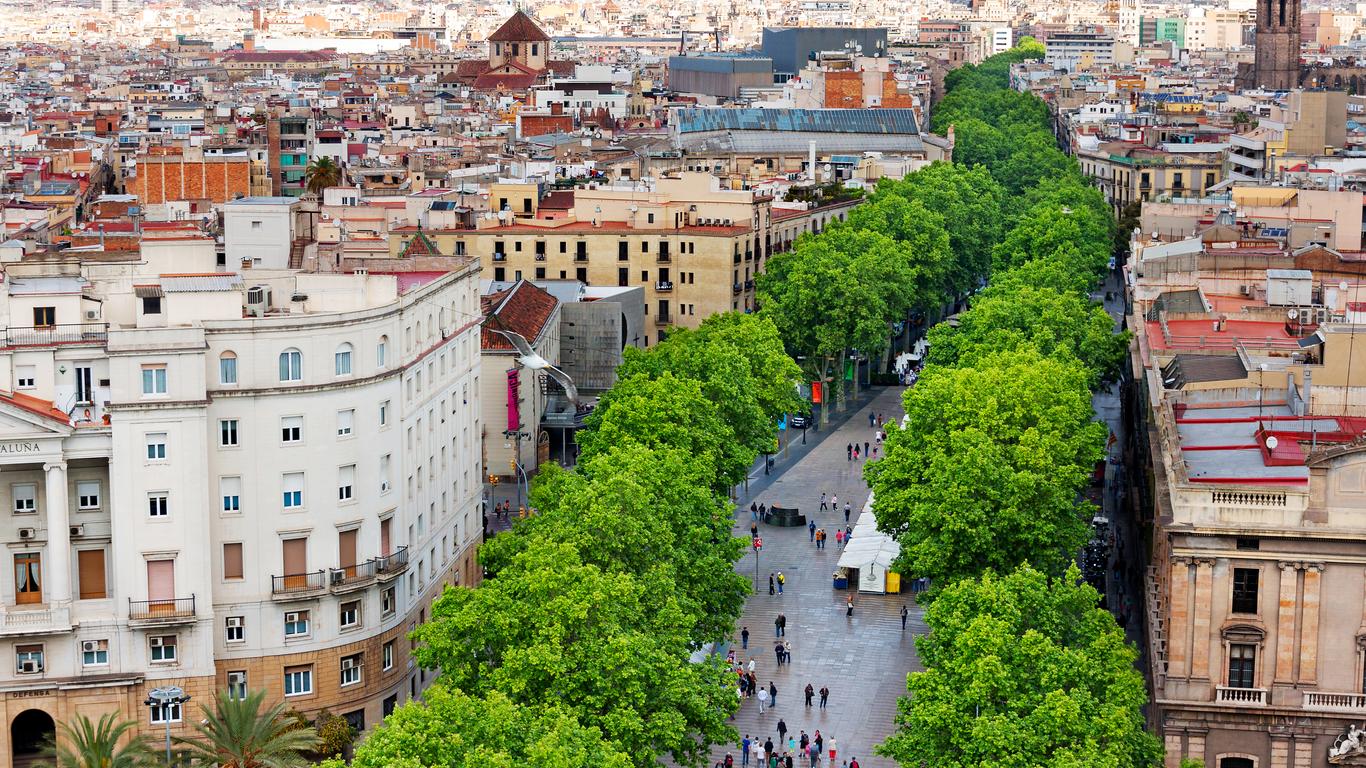The zenith of Barcelona’s tourism scene, La Rambla is a collision of contemporary appeal and ancient Catalan culture. Lined with historic facades, leafy plane trees and more than its fair share of street buskers, the atmosphere is energetic, upbeat and easy on the eyes.
Strolling along La Rambla is a great way to admire 18th and 19th century architecture like the dramatic Palace of the Virreina and the Liceu Theatre. Venture further afield, and La Rambla’s side streets hide a kaleidoscope of hidden gems, including the bustling La Boqueria market and the palm tree fringed Royal Square. Technically, La Rambla is made up of five sections, which explains why it’s often referred to as Las Ramblas.
The tree-lined pedestrian mall stretches for 1.2 kilometres, bordered by Port Vell to the south and Plaça de Catalunya to the north. To the east is the dramatic Gothic Quarter, with the El Raval district to the west. Thanks to its length, La Rambla is easy walking distance from most major tourist centres. From its southern tip, the Port of Barcelona is just a 15-minute walk. Public transport stops line its borders, with Line L3 of the Barcelona Metro servicing Catalunya, Liceu and Drassanes. Barcelona Bus routes also stop along the roads that skirt La Rambla.
While today La Rambla is a sensory overload of hawkers, buskers, artists and street food stalls, it takes its name from the Arabic word ‘raml’ which means seasonal stream. This is a nod to the watercourse that once ran through its footprint. For those who fall head over heels for the Catalonian capital, it’s said that drinking from the 20th century Font de Canaletes water fountain guarantees a return to Barcelona.





